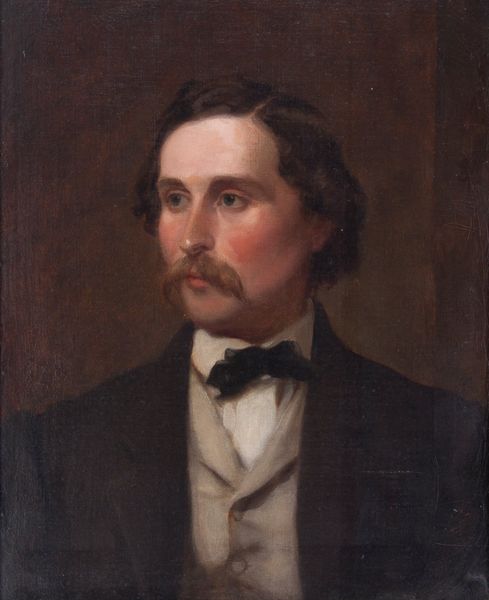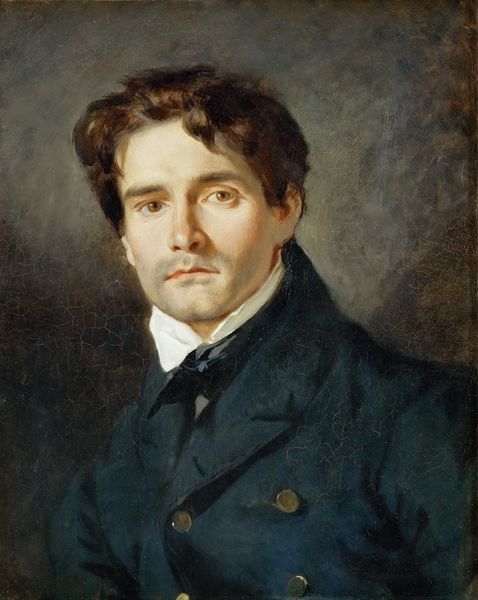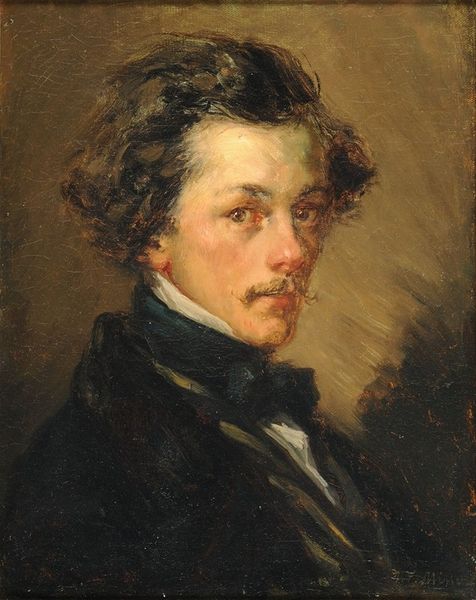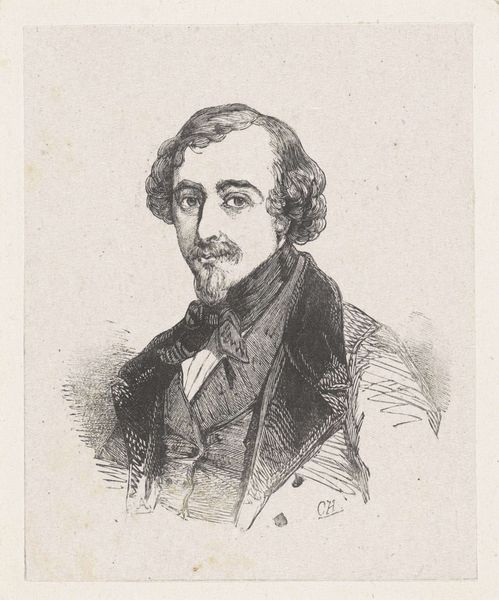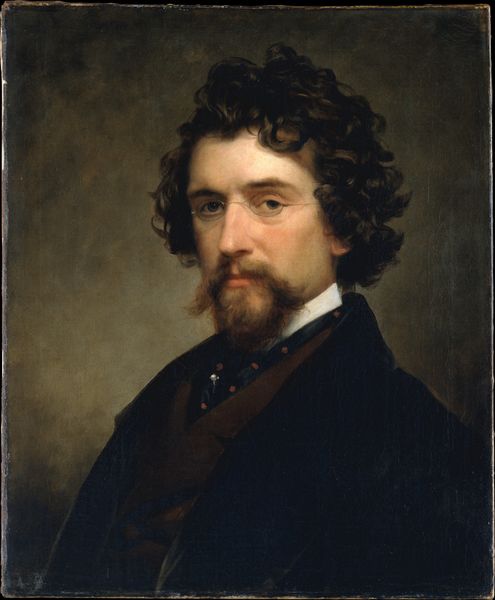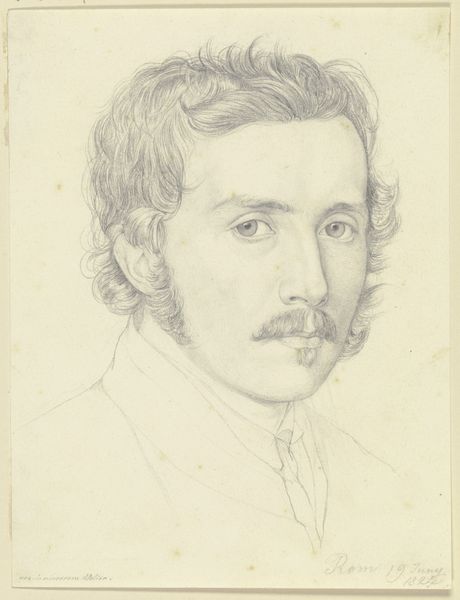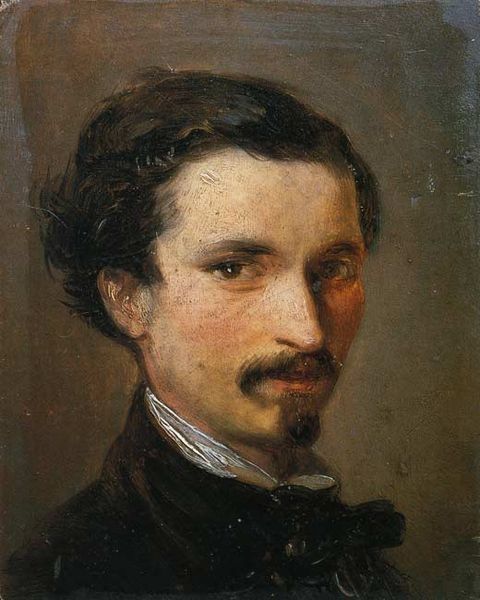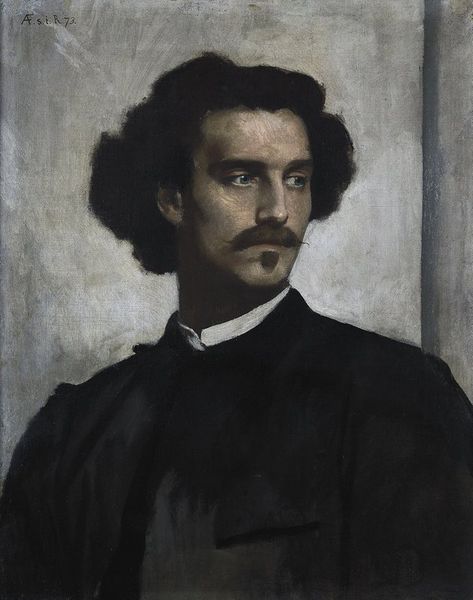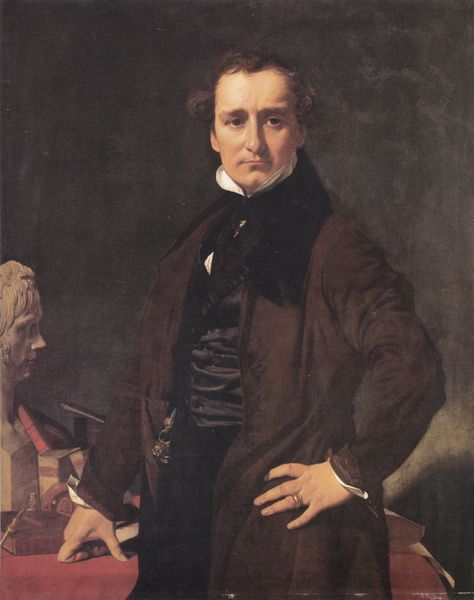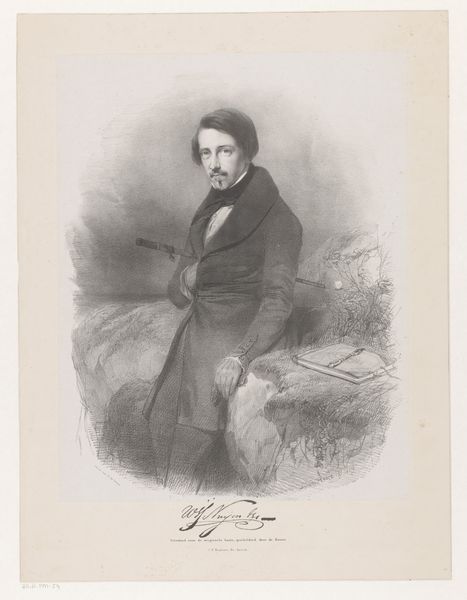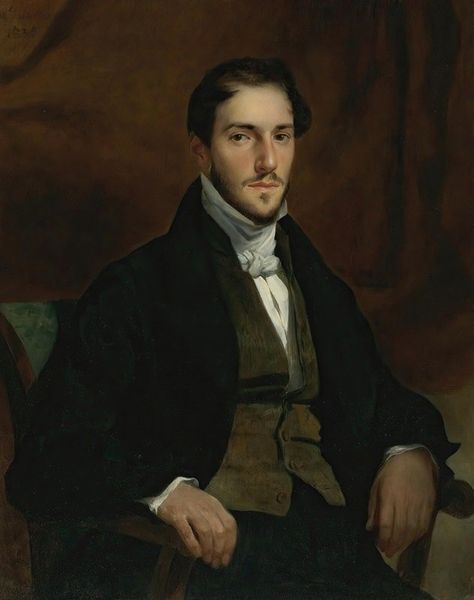
painting
#
portrait
#
low key portrait
#
portrait
#
painting
#
portrait subject
#
portrait reference
#
portrait head and shoulder
#
romanticism
#
men
#
portrait drawing
#
history-painting
#
facial portrait
#
academic-art
#
portrait art
#
fine art portrait
#
celebrity portrait
Dimensions: 24 x 19 3/4 in. (61 x 50.2 cm)
Copyright: Public Domain
Editor: We’re looking at Eugène Devéria’s portrait of *Louis-Félix Amiel*, painted in 1837. It’s a rather direct, straightforward depiction; I’m struck by how somber and still it feels. What symbols or cultural cues do you notice? Curator: Beyond the overt visual cues, the very *style* of the portrait whispers of a specific moment in time. The tight control and emphasis on verisimilitude signal the academic style. How does this restraint, this commitment to representing reality ‘truthfully,’ itself function as a symbol, do you think? Editor: It feels almost like an official record, or… documentation. But of whom? He's not someone I recognize. Curator: Exactly. Portraits of this era often served to elevate the sitter. Devéria, known for his history paintings, brings that same weight to Amiel. Note how his gaze holds both confidence and a hint of melancholy. The artist uses visual language to construct and convey particular character traits that speak to broader ideals of the era. It seems significant. Editor: So, the very act of painting a person in this way elevates them? It’s not just about *who* is painted, but *how*? Curator: Precisely. The dark palette and careful lighting – almost theatrical – imbue the subject with a certain importance. It’s not merely a likeness; it's a carefully constructed *image*, designed to resonate with contemporary audiences familiar with the symbolic language of portraiture. The trappings create context and understanding. Editor: I never really considered the image itself as carrying all that cultural baggage, as if it could transmit and also amplify cultural memory and meaning. Curator: Every detail, from the cut of the coat to the set of the mouth, plays a part. Even the artistic choices function as symbolic layers, enriching our understanding, if we only pause to interpret them. Editor: So, seeing this now teaches me that portraiture isn’t just about recording a face, but participating in constructing identity, reflecting values, and engaging cultural memory? It certainly gives the picture new resonance for me.
Comments
No comments
Be the first to comment and join the conversation on the ultimate creative platform.
